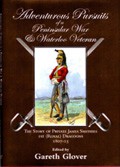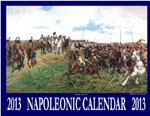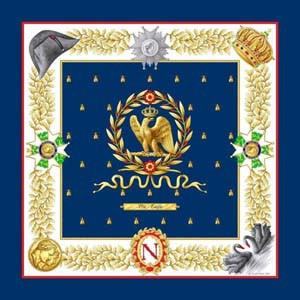Napoleon and his milieu
HICKS Peter, BROERS Michael, GUIMERÁ Agustín, The Napoleonic Empire and the New European Political Culture
Napoleon was a breaker of worlds. He made and remade most of the European continent almost at will, for well over a decade. Much of our world was forged as a consequence of his actions. Ever since we have taken our revenge – whether as scholars, novelists, politicians or private citizens – by making, unmaking and remaking him. Napoleon: assassin or saviour of the Revolution? Hero or charlatan? Manager or despot? Warmonger or pacifist? These are the questions French and foreign historians have tried to answer over the last two centuries. In this collection of essays, a new generation of historians re-evaluates the Napoleonic era by focusing on the constitutional and institutional impact of this period on western European society.
E-book edition.
HUGUENAUD Karine, GOTT Ted (ed.), Napoleon: Revolution to Empire
This panoramic volume tells the story of French art, culture and life from the 1770s to the 1820s: the first French voyages of discovery to Australia, the stormy period of social change with the outbreak of the French Revolution, and the rise to power of the young Napoleon Bonaparte and his wife Josephine. As well as telling the remarkable story of France's close involvement with Australia in the early 1800s, napoleon: revolution to empire showcases hundreds of works of breathtaking opulence and luxury.
This catalogue accompanies the napoleon: revolution to empire exhibition, organised by the national gallery of Victoria and the Fondation Napoléon.
NAPOLEON I , Correspondance générale de Napoléon Bonaparte : Tome 12 – La campagne de Russie 1812 (in French)
Volume twelve of the general correspondence of napoleon Bonaparte covers the single tragic year of 1812. As Napoleon I crossed into Russia territory in June 1812, no-one envisaged anything but success for the Russian campaign. Yet as they went deeper into Russia – with governing the empire becoming harder and harder by the mile – napoleon and his multinational but ultimately divided army found their campaign bogged down by the Russian tactics and resolve. The defeat, a turning point in European history, sent shockwaves across the continent.
The Russian Campaign
 HOUDECEK François, Du Niémen à la Bérézina: Lettres et temoignages de soldats français sur la campagne de Russie (in French)
HOUDECEK François, Du Niémen à la Bérézina: Lettres et temoignages de soldats français sur la campagne de Russie (in French)
The history of the Russian campaign is well known; from the crossing from Niemen to Borodino to the charred rubble of Moscow, and the terrible journey to Berezina. But the experiences, the daily life and the sufferings of the men who wrote down their testimonies and were lucky enough to survive it can hardly be imagined today.
It is that which makes the memoirs of the soldiers published in this edition so valuable. Conserved in the military archives, four of the five testimonies have never been seen before. Two centuries after the event, they allow us to hear the voices of the soldiers, what they saw, how they lived, how the army of the 20 nations was formed, as well as firsthand accounts of the advance on Moscow.
WILSON Robert, Narrative of Events during the Invasion of Russia by Napoleon Bonaparte: And the Retreat of the French Army, 1812 (Cambridge Library Collection Series – Naval and Military History)
A colourful British general, Robert Wilson (1777-1849) was knighted many times over by crowned heads, but never by his own monarch. Following the invasion of Russia, Wilson was seconded to Kutuzov's army, and was present at all the major engagements. Edited by his nephew and published in 1860, this second edition of Wilson's journal includes personal and official correspondence from tsar Alexander I and his generals, and gives not only detailed accounts of troop movements and strategy, but also vivid descriptions of the savagery meted out by both sides. It remains an essential source of information on one of history's most famous military retreats.
MIKABERIDZE Alexander, Russian Eyewitness Accounts of the Campaign of 1812
Only a handful of Russian memoirs (such as those of Alexey Vermolov, Nadezhda Durova, Denis Davydov and Eduard Lowernstern) have been translated into English; dozens still remain unknown outside Russia. This book seeks to fill this gap by providing, in English, previously unavailable memoirs of Russian participants. Each chapter deals with an important episode of the 1812 campaign and features dozens of memoirs, letters and diaries. These documents show the other side of the proverbial coin, providing an insight into Russian leadership, how and why decisions were made and what a common Russian soldier experienced as he slowly progressed towards victory.
The Peninsular War
 BROMLEY David, BROMLEY Janet, Wellington's Men Remembered: A Register of Memorials to Soldiers who fought in the Peninsular War and at Waterloo – Vol 1
BROMLEY David, BROMLEY Janet, Wellington's Men Remembered: A Register of Memorials to Soldiers who fought in the Peninsular War and at Waterloo – Vol 1
Wellington's men remembered is a reference work which has been compiled on behalf of the association of friends of the waterloo committee and contains over 3,000 memorials to soldiers who fought in the peninsular war and at waterloo between 1808 and 1815, together with 150 battlefield and regimental memorials in 24 countries worldwide. Photographs of memorials are included in a CD-rom inserted in each.
FLETCHER Ian F., The Peninsular War: Wellington's Battlefields Revisited
In 1994 Ian Fletcher published his book fields of fire, which was the first book to show wellington's peninsular war battlefields in full colour. Now, almost twenty years on, he returns with a second book, the Peninsular War: Wellington's battlefields revisited which shows how things have changed since 1994. The photographs cover all of Wellington's major battles, and many smaller engagements also, to show them in all their glory, from the snowy Galician mountains, to the dry, dusty plain of Salamanca, and from the low rolling slopes of Albuera to the breathtaking Pyrenees.
SMITHIES James, Adventurous Pursuits of a Peninsular War and Waterloo Veteran: The Story of Private James Smithies, 1st Royal Dragoons
For those who bother to look properly, a thick vein of an honest account woven through Smithies' story and much that rings very true. His description of cavalry actions are not filled with heroics, but more the truth of confusion, lucky escapes and great relief to simply survive intact. And waterloo, his last battle, is seen almost only through his own personal journey; his fear at encountering the cuirassiers and his tactic of riding close to them to prevent them having the room to make their deathly stab; his wounding and capture; his numerous brushes with death whilst being driven to the rear and eventual escape speak all too honestly of personal experience to have been added to.
WELLER Jac, Wellington in the Peninsula
Jac Weller covers all the battles with the French in which wellington was involved. Talavera, Busaco, Salamanca and Vitoria are among the famous battles that he brings to life once more, with the aid of meticulous research, extensive visits to and photographs of the battlefields themselves. This is a reprint of Wellington in the peninsula, which was first published in 1969.
Social History
 DIVALL Carole, Napoleonic Lives
DIVALL Carole, Napoleonic Lives
Two hundred years ago the revolutionary and Napoleonic wars convulsed the whole of Europe. More records than ever are available on the men who served in the British army during the wars, and on their families: Carole Divall's new book acts as a guide on how to locate and understand these sources, and get the most out of them. Using the full range of sources, she reconstructs in detail the stories of a representative group of individuals who took part in the wars: a soldier who saw action as a marine in the Mediterranean fleet, artillerymen who played a crucial role in battles and in sieges, a gentry family whose sons served as officers in the peninsula and in India, and two remarkable women who were among the many who went to war with the men.
FRASER TERJANIAN Anoush, Commerce and Its Discontents in Eighteenth-Century French Political Thought
The roots of modern commerce and the origins of economics are usually traced to Adam Smith and his alleged celebration of free trade. Questioning this conventional story, Anoush Fraser Terjanian uncovers ambivalence towards commerce in eighteenth-century France. Through careful analysis of the enlightenment's best-selling history of comparative empires, the history of the two indies (1780), her study offers a new perspective on the connections between political economy, imperialism, and the enlightenment.
E-book edition
TOMORY Leslie, Progressive Enlightenment: The Origins of the Gaslight Industry, 1780-1820
In progressive enlightenment, Leslie Tomory examines the origins of the gaslight industry, from invention to consolidation as a large integrated urban network. Tomory argues that gas was the first integrated large-scale technological network, a designation usually given to the railways. He shows how the first gas network was constructed and stabilized through the introduction of new management structures, the use of technical controls, and the application of means to constrain the behavior of the users of gas lighting. Tomory argues that the gas industry represented a new wave of technological innovation in industry because of its dependence on formal scientific research, its need for large amounts of capital, and its reliance on business organization beyond small firms and partnerships–all of which signaled a departure from the artisanal nature and limited deployment of inventions earlier in the industrial revolution. Gas lighting was the first important realization of the enlightenment dream of science in the service of industry.
JOHNS Richard, Broadsides: Caricatures and the Navy 1756-1815
Broadsides explores the political and cultural history of the navy during the later eighteenth and early nineteenth centuries through contemporary caricature. This was a period of intense naval activity – encompassing the seven years war, the American war of independence, the wars against revolutionary and Napoleonic France, and the war of 1812. Naval caricatures were utilized by the press to comment on events, simultaneously reminding the British public of the immediacy of war, whilst satirizing the same navy it was meant to be supporting. The thematic narrative explores topics from politics to invasion and analysis of the context and content of individual prints. It explores pivotal figures within the navy and the feelings and apprehensions of the people back home and their perception of the former.
BRAND Emily, The Georgian Bawdyhouse
It is safe to say that selling sex constituted a significant, and visible, part of urban culture in Georgian England. In the shadows of the fashionable public parks and gardens, in alleyways along the banks of the Thames, even at church doors, there lurked a world of criminality and prostitution for which the bawdyhouse became one of the most potent symbols. The book explores what is was like to run, work in, and frequent these establishments, which ranged from the filthy East End hovel to grand up-market apartments.
Multimedia
 PROPPER Daniel, FEIGNIER Olivier, L'écho des batailles
PROPPER Daniel, FEIGNIER Olivier, L'écho des batailles
Piano music from the 1800s to 1815 has not attracted the attention its diversity rightfully deserves. This period is obviously more renowned for the battles that pitted Royalist against Republican and Republican against Imperialist, than for the flourishing musical life that accompanied it. And yet the fifteen years at the beginning of the century marked a period when composers started to hear a new harmonic language. This recording here reveals this diversity, still largely unknown. The disk comprises pieces carefully selected from amongst many works which have fallen into obscurity.
DORMER Tom, DUFF Andrew, The Peninsular Collection: Salamanca (DVD)
Since his return to the Iberian peninsula in 1809, general Arthur Wellesley (later the duke of Wellington) had with his small army been a constant thorn in the side of a series of napoleon's marshals in Spain, studiously avoiding battles that he could not win and falling back before superior forces to the lines of Tores Vedras in 1810. By 1812 he had forged a successful anglo-portuguese army with a string of victories to their credit that included Talevera, Busaco and Funtes de Onoro.
Calendars and Christmas Cards
 The Napoleonic History Society calendar 2013 (external link).
The Napoleonic History Society calendar 2013 (external link).
Royal Green Jackets (Rifles) Museum Christmas cards (external link), showing touching scenes from the Peninsular War, painted by Christa Hook.
The Eagle Scarf
 The Eagle scarf (external link), the inaugural scarf in Swan Ways private-label collection, celebrates the epic of the First Empire and the legendary love story of Napoleon and Josephine. Now at special seasonal price.
The Eagle scarf (external link), the inaugural scarf in Swan Ways private-label collection, celebrates the epic of the First Empire and the legendary love story of Napoleon and Josephine. Now at special seasonal price.


